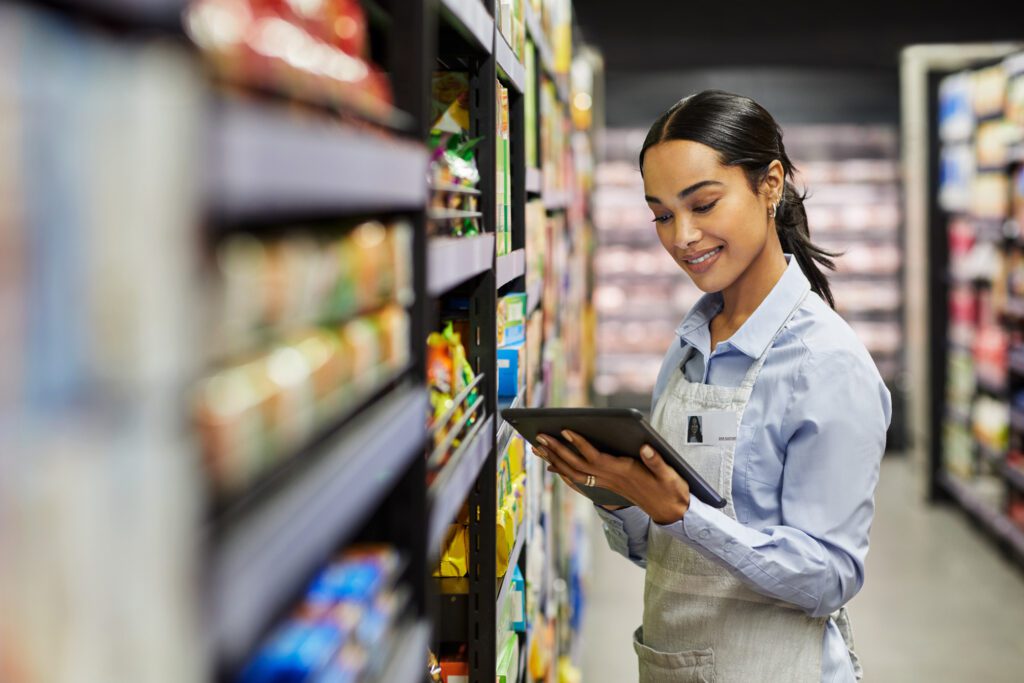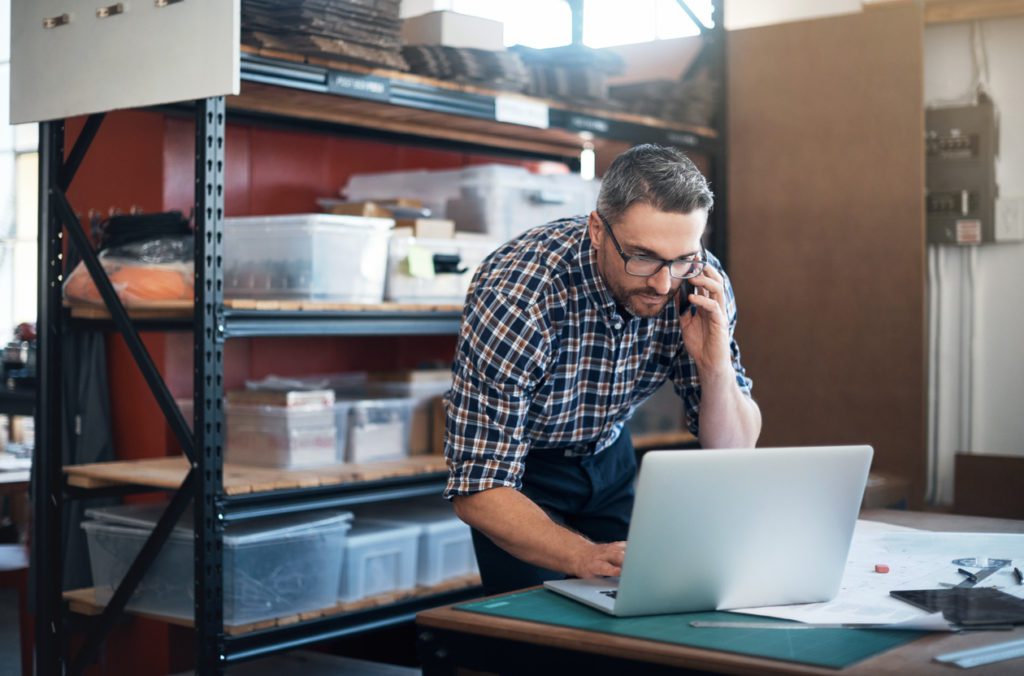The Internet of Things (IoT) makes collecting data and connecting things simple and has a profound — and transformative — impact in the retail sector. The IoT market is already valued at about $662 billion in 2023 and is forecast to grow to $3.3 trillion by 2030.
IoT is quickly becoming an essential component across the retail landscape, from procurement and warehousing, logistics and loss prevention, shopping and customer experience, and more. It’s creating greater opportunities for data collection and automation to improve efficiency in several important ways.
Improved Inventory Management
IoT devices like Radio Frequency Identification (RFID) tags, readers, and sensors are helping retailers track products in real-time.
Coupled with smart shelves, retailers are alerted when it’s time to restock without having to do a manual inventory. This eliminates out-of-stocks on shelves by providing real-time visibility. Weight sensors and object recognition tech on digital shelves can even detect incorrect shelf placements.
These devices can also help:
- Identify item locations
- Automate inventory management, such as reordering points and safety stock levels
- Track and monitor pick, pack, and ship operations in warehouses
- Identify spoilage or expiration of products
The Internet of Things is transforming the retail industry and providing retailers with the tools and data they need to thrive, improving efficiency and productivity while enhancing the customer experience.
All of this tech, however, requires a robust infrastructure, tech stack, and expertise in deployment. The experts at Cox Business are here to help. Contact Cox Business today to learn more about how IoT and other cutting-edge technologies can streamline your business and help you grow.
Learn moreEnhanced Customer Experience
IoT is also playing a big role in improving the customer experience and enabling a more seamless experience across physical and online stores. For example, smart shopping carts with built-in touchscreens help shoppers see product information, similar to the way they would do so online. Interactive kiosks can also provide this service to help customers make purchasing decisions.
Customers can also use smart carts to personalize their trip, build shopping lists, navigate the store, and check prices. Beacons can alert shoppers to promotions and discounts when they are close to items or remind them of past purchases.
Interactive dressing room mirrors augmented with IoT can enhance the try-before-you-buy experience. Virtual fitting rooms let shoppers try on items without touching them. Shoppers can scan RFID tags and see what they look like when wearing an item.
Energy Efficiency and Sustainability
IoT also enables more sustainable — and money-saving — practices for retailers to reduce overhead costs. Smart lighting and thermostats can automatically regulate power when spaces are not in use to reduce heating, cooling, and electricity consumption. Real-time analytics can monitor usage patterns while AI automatically adjusts configurations to reduce waste.
Environmental sensors are also being deployed across stores, warehouses, distribution centers, and transportation fleets to monitor emissions with an eye toward greener fulfillment.
Advanced Payment Solutions
Touch-and-go payments are gaining popularity thanks to near-field communication (NFC) technology. Customers can pay with smartphones or wearables for faster checkouts and hands-free interactions. As of 2023, more than $2 trillion of digital payments are made annually in the U.S.
While there have been safety concerns, deploying encryption and tokens in IoT payment systems helps secure customer financial data.
One early adopter, Amazon Go stores, provides an automated shopping experience using cameras, beacons, and proximity sensors to identify customers in real-time, know what products are taken from shelves, and charge their accounts without having to scan merchandise or wait in checkout lines.
Data-Driven Decision Making
With IoT, retailers get mass amounts of customer data — everything from where shoppers go in stores, which items they examine, and purchasing habits.
This data can be used in various ways, such as:
- Optimizing floor plans by better understanding foot traffic
- Creating better product placement to encourage sales
- Optimizing staffing schedules.
- Uncover insights, such as when items are frequently bought together.
Security and Loss Prevention
The National Retail Federation (NRF) reports that retailers are losing about $94.5 billion annually to shrinkage yearly. Seven in 10 retailers say the problem has increased over the past few years. IoT devices, like cameras with facial recognition and RFID tags, are helping to deter theft and improve store security.
Integrating IoT and AI can help with real-time threat analysis. For example, stores can identify known shoplifters when they enter locations. Analytics programs can autonomously monitor video feeds to look for suspicious behavior, such as large groups of people loitering around high-theft areas. IoT can be deployed to identify individuals wearing masks and organized retail crime (ORC), a growing problem for retailers, to help reduce shrinkage.
IoT is also helping retailers recover lost and stolen shopping carts. The Food Marketing Institute reports stolen carts add up to $800 million yearly in losses. IoT enables tracking of assets to help locate and retrieve carts and baskets, including status updates and alerts about damage.
Supply Chain and Logistics Optimization
IoT is also playing an increasing role throughout the entire supply chain, helping manage inventory and ensuring timely delivery. Smart tags and sensors can track products on the way to warehouses and distribution centers, ensuring they are undamaged. Bluetooth temperature and humidity sensors can monitor environmental conditions for temperature-sensitive items.
Inventory tags using IoT and blockchain technology make it difficult for counterfeit items to be introduced. Data from IoT tags are recorded on blockchain ledgers that maintain a history of individual items that can’t be changed. Every action from manufacturing to distribution is recorded in a block, creating a secure audit tail. Each subsequent interaction is recorded as a transaction to authenticate items.
Data from IoT devices also helps retailers analyze systems and processes for fulfillment, from reducing travel time in warehouses to analytic routes for savings on shipping. Optimization can lead to significant bottom-line improvements since order picking and travel time account for more than half of all warehouse operating costs.
Data also helps keep customers informed on deliveries with more accurate information.
The Internet of Things is transforming the retail industry and providing retailers with the tools and data they need to thrive, improving efficiency and productivity while enhancing the customer experience.
All of this tech, however, requires a robust infrastructure, tech stack, and expertise in deployment. The experts at Cox Business are here to help. Contact Cox Business today to learn more about how IoT and other cutting-edge technologies can streamline your business and help you grow.
Learn more

![Top 5 Reasons To Review Your Business ISP [Infographic]](https://www.coxblue.com/wp-content/uploads/2013/10/isp_review.jpg)
